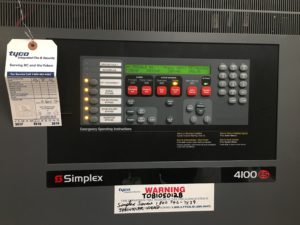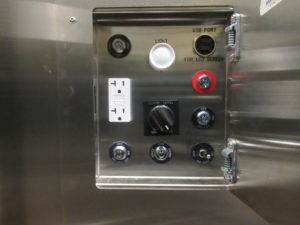Today’s buildings pose new challenges and different problems to firefighter personnel and techniques. Universally, regardless of whether it’s a high-rise building or a low-rise building, the objective is the same: to rescue people as quickly and as safety as possible.
Firefighters need the elevator for their use and have long raised concerns of elevators not being available to them upon arrival on site. While wearing all their protective gear, firefighters carry an additional 65 lb (29.5 kg). Firefighters also carry long lengths of hose and attachments weighing an additional 50 lb (22.6 kg) to 65 lb (29.5 kg,). Using the stairs to access to upper floors in a building should be the last resort. Of course, firefighters will use stairs where there is no other means of access. This was the case at the World Trade Center on September 11, 2001.
After reaching the fire floor, firefighters are subjected to high heat temperatures above 200 F (93 C). Their protective clothing will provide a limited amount of protection, considering the “pre-heating” of the gear, depending on the amount of heat exposure, etc. Given the tough elements, firefighters and equipment must have elevator use to get to the upper floors by operating on Phase II Firefighters Operation.
Phase II Firefighters’ Emergency Operation
Phase II Firefighters’ Emergency Operation (FEO) allows firefighters to have control over the operation of the elevators. Elevators operating on Phase II are “firefighters’ tools” and they want the maximum number of elevators available. Firefighters will take control during a fire, and they will determine whether and how many elevators are to be used. It is standard operating procedure for the firefighters to use the elevators not only to carry equipment for firefighting or evacuation purposes, but to also disperse fire personnel to non-fire-involved floors.
Evacuation Needs in a Fire
In some cases, firefighters need to evacuate handicapped or injured people. The Firefighters have immediate concerns relating to smoke and heat spread, stack effect, and uncontrolled evacuation of building occupants down the same stairways that firefighters are trying to use to move up to locate, surround, and extinguish the fire. Safely evacuating physically-disabled persons is always a concern. In a fire, even a firefighter can be considered disabled, especially when near exhaustion or if his/her compressed air supply is gone. Further, able-bodied occupants can become disabled from smoke, from walking up or down steps, or from shock. Therefore, when you hear that provisions must be made for the disabled during a fire, expand the overall picture, because even normal persons can suddenly become non-ambulatory. Consequently, elevators must be a reliable tool to be utilized by the firefighters in the performance of their duties.
GUNN FEO Training
To assist building operations staff who should understand the basics of FEO, GUNN can provide Firefighters Training. Our training contains a presentation and onsite demonstration on FEO and Entrapment rescue.
Feel free to contact us HERE and organize Firefighters Training for your Team!
. 

